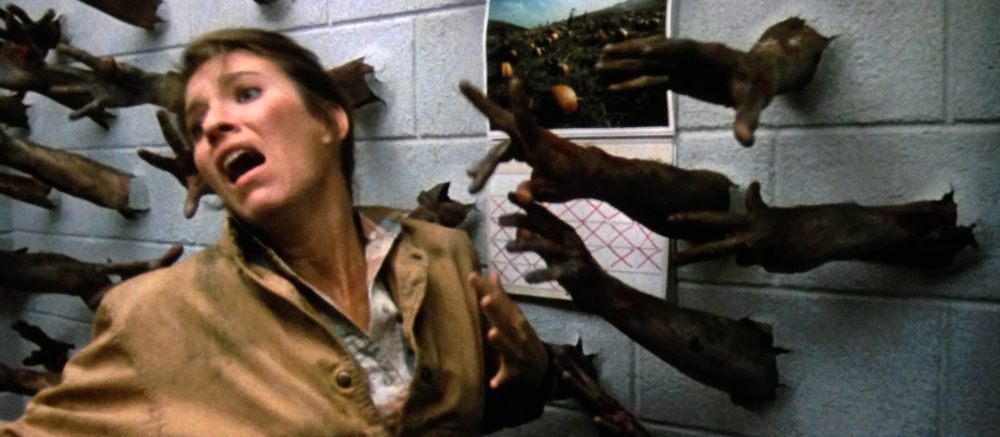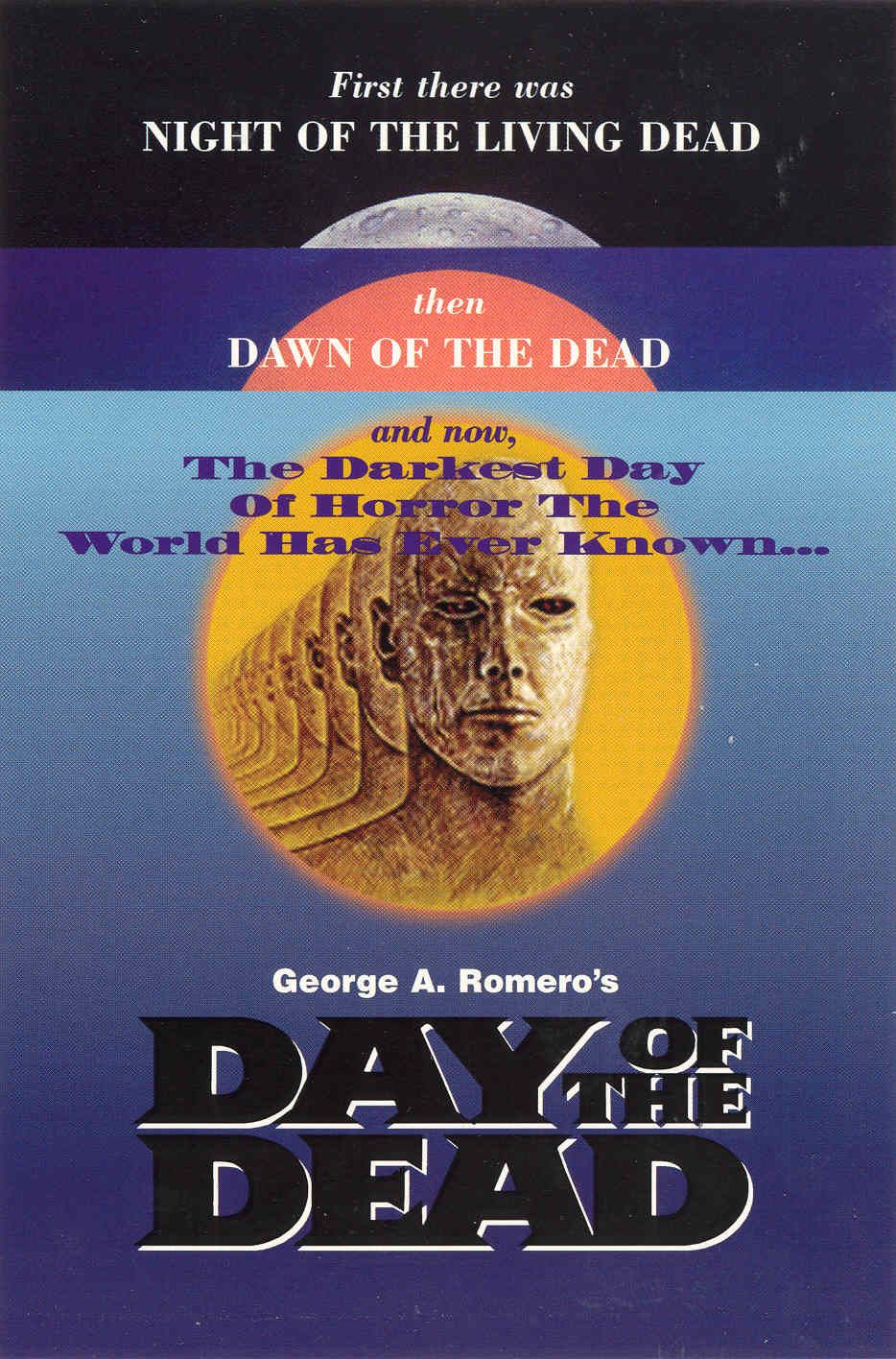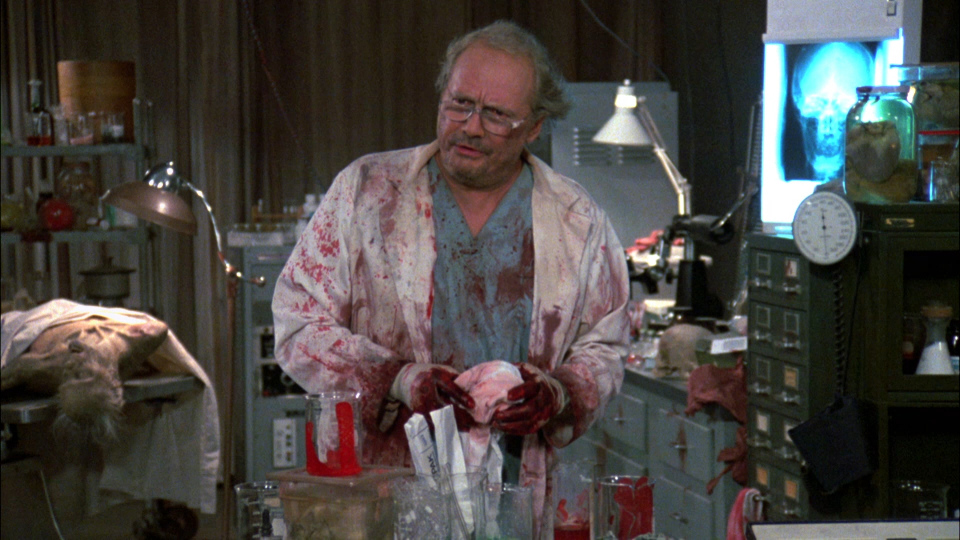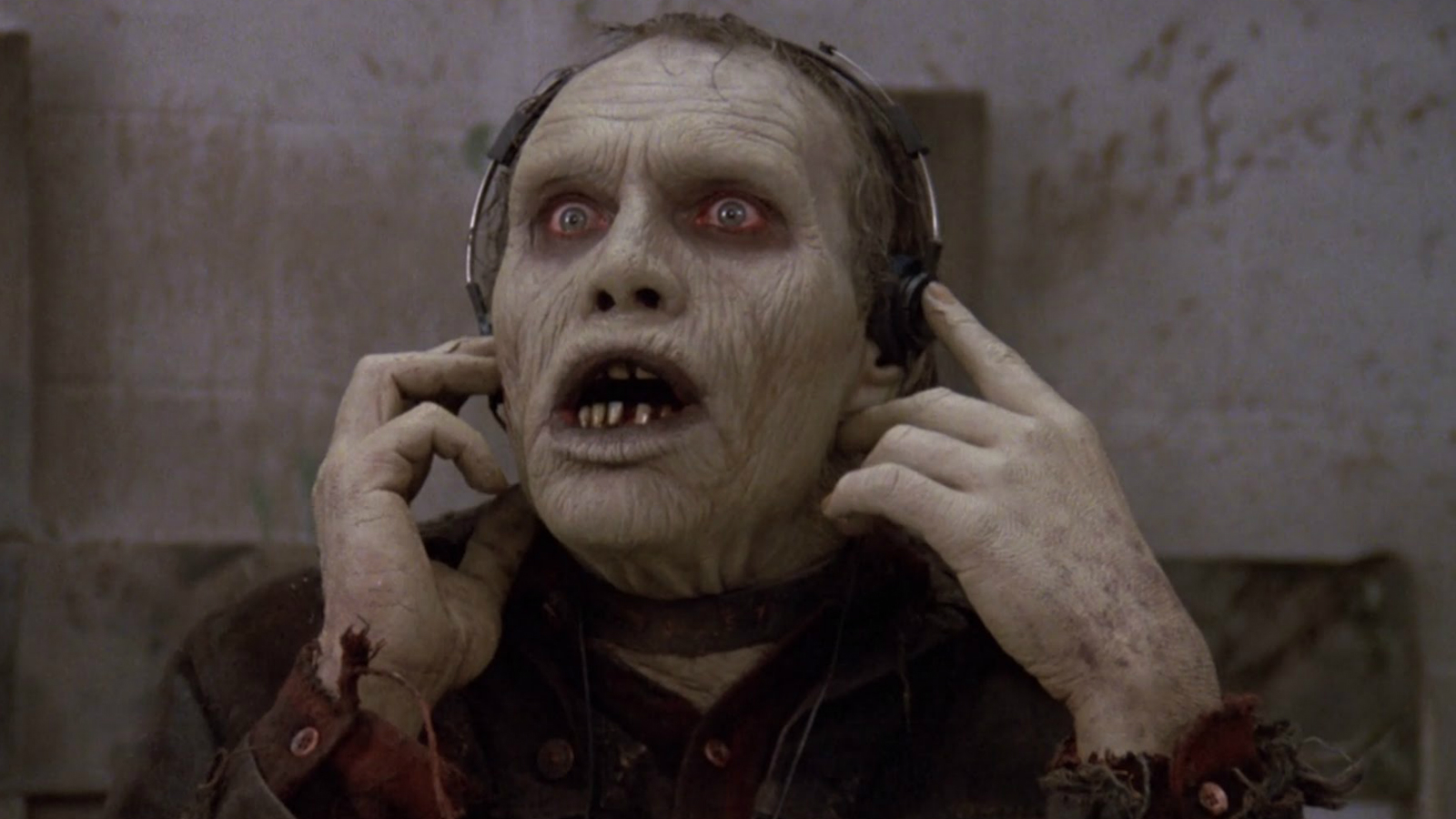

“I’m runnin’ this monkey farm now, Frankenstein!”
The untouchable reputations of George A. Romero’s first two zombie films rest chiefly on their timely and perceptive satire. Night of the Living Dead dissected race relations in the 1960s and invoked the tumultuous intensity of the era’s social and political upheaval. Dawn of the Dead poked barbs at rampant consumerism as the ‘70s drew to a close and posited that there wasn’t much separation between the undead and the living. With the two pathologies addressed in those films still lingering (in fact, they are debatably worse now), Romero chose not to tackle another contemporary social issue. Instead, with The Day of the Dead he elected to bluntly approach the destructive tendencies of mankind by dropping most of the allegorical pretense and using his worldwide zombie takeover as a backdrop for an unhinged military-flavored freakout.
It’s a cynical coda, heavier than its predecessors, and Romero’s personal favorite of his original undead trilogy. Regrettably, a dispute arose over the artistic direction of the film, which Romero had initially envisioned, quite audaciously, as the Gone with the Wind of zombie films. His budget was halved and the script rewritten numerous times to account for it. With a scaled-back and compromised production, Romero still manages to convey his nihilistic message; but aside from the spectacular gore of maestro Tom Savini’s special effects, The Day of the Dead is a cut below its predecessors.
In Day of the Dead, the plague described in the first two films has overtaken the globe and completely wrecked civilization. According to Dr. Logan (Richard Liberty), for every single living human there are approximately 400,000 zombies. The film centers on a group of survivors consisting of military personnel and scientists who have barricaded themselves in an underground military bunker in hopes of surviving the undead apocalypse. The film opens with the exploration of a city void of survivors, the din of growling zombies audible above the whir of the helicopter blades. After the fruitless search, the team of scientists led by Dr. Sarah Bowman (Lori Cardille) retreat to the dreary subsurface facility to continue researching captured zombies in an effort to find a solution to the pandemic. Upon their return, they are informed that the military detachment’s liaison has died and the hot-headed Captain Rhodes (Joe Pilato) has assumed command—a fact he ruthlessly underlines for the research team at gunpoint.

In contrast with the half-serious tones of Romero’s first two zombie movies, Day of the Dead is jagged and cartoonish. On the one hand, he’s written Sarah Bowman as a strong, competent firebrand who cares more about her mission than herself. Setting aside her frequent nightmares, she remains the most composed and capable member of her team as her lover (Anthony Dileo Jr.) turns suicidal, her radio operator (Jarlath Conroy) pickles his brain with alcohol, and her pilot (Terry Alexander) grows disillusioned with the mission. She stands up against the tyrannical Rhodes when he threatens to have her shot dead and refuses to abandon her research despite the likelihood that a cure is years or even decades away. Romero also includes a touching sequence in which Dr. Logan awakens the latent humanity in a zombie, lovingly christened Bub (Sherman Howard), teaching him chores, rudimentary communication, and the joys of music (but also feeding him the remains of the dead liaison as a reward). On the other hand, he depicts Logan as a maniacal butcher who waltzes into the lunchroom in a blood-stained apron, interrupting an intense personnel meeting and demanding food. The band of traumatized soldiers, cackling like demonic chipmunks and filling every spare moment with sex jokes and profanities, are caricatured agents of pure chaos.
Though Romero’s script is nothing to scoff at, it is baffling that every conversation immediately erupts into a shouting match regardless of the discussion’s inherent dramatic tension. The characters are stripped of all likable personal qualities to contrast with the charming Bub in an attempt to elucidate a potential pathway to peaceful conflict resolution in empathic understanding of one’s enemies. Too much time is spent emphasizing the diametric opposition between scientists and soldiers and the various power struggles, and slogging through three quarters of the film with despicable characters trapped in an underground bunker, stagnating and irritable, unloading their frustrations onto one another with vein-throbbing ululations is a grating, almost thankless experience. All of this shifts the view of humanity from protagonist to antagonist.

And then Romero almost entirely redeems himself. After the bleak, humorless grind of the film’s buildup, a gruesome orgy of gore is unleashed. I’m not an aficionado, but if this isn’t Tom Savini’s masterpiece then I’m in for a treat when I finally find it. The varied assortment of decaying flesh, exposed bones, and rotting guts is supremely nasty, showcased in drawn-out set pieces presented with glee. And while the explosion of violence doesn’t come until the climax, Savini’s exemplary work appears throughout. In the opening sequence the survivors confront a jawless zombie with a tongue that just keeps drooping. Flesh is ripped, bright red blood oozes, and bodies are torn limb from limb.
Many critics have become retrospective champions of Day of the Dead, some even going so far as to crown it the best of Romero’s films. I’m less enthusiastic. I understand, conceptually, what Romero was aiming for with his screenplay and direction, but the grotesque characters and hammy performances detract from the experience for me, to the point that it’s hard to look past them and appreciate his partially fulfilled ambitions without qualification. These shortcomings even dissuade me from trying to tease out deeper themes that may lurk beneath its viscera-smeared surface. But perhaps I’ve made the negative case too strongly. Although in my eyes it is the weakest of Romero’s original trilogy, it’s still a good zombie flick in isolation and keeps the series on the rails.